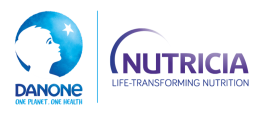CET Time zone (UTC +1)
Exploring Sarcopenia and Cachexia: Multidisciplinary Perspectives
Welcome to the first day of our Annual Conference on Sarcopenia, Cachexia, and Wasting Disorders. Discover world-renowned experts to discuss the latest research and advancements in the field.
BASIC SCIENCE
Session A
09:30-10:45
Metropolitan ballroom
New and established mouse models for the study of cancer cachexia
Chairs: Elke Dworatzek, Germany – Jochen Springer, Germany
Atrophy-independent mechanisms of muscle weakness during ovarian cancer
Christopher Perry, Canada
Bedside to bench: modeling cachexia in different cancer patient trajectories
Fabio Penna, Italy
Mouse models of pancreatic cancer cachexia: investigating sex-dependent tissue loss
Erin Talbert, USA
Ovarian cancer cachexia: new insights from clinical studies and animal models
Andrea Bonetto, USA
Discussion
Break
10:15-11:00
METROPOLITAN BALLROOM
BASIC SCIENCE
Session B
11:00-12:15
The role of the liver in cancer cachexia
Chairs: Mauricio Berriel Diaz, Germany – Andrew Judge, USA
Leukemia inhibitory factor (LIF) suppresses hepatic de novo lipogenesis and induces cachexia
Wenwei Hu, USA
Vagal blockade of the brain-liver axis deters cancer-associated cachexia
Xiling Shen, USA
Genomic liver profiling identifies hepatokines promoting tissue wasting in cancer cachexia
Doris Kaltenecker, Germany
Regulation of hepatic amino acid metabolism
Anne-Catherine Maurin, France
Discussion
DUPONT BALLROOM
GENERAL CACHEXIA AND SARCOPENIA
Session C
11:00-12:15
Muscle wasting and osteosarcopenia: the role of the immune system
Chairs: Paul Titchenell, USA – Henning Wackerhage, Germany
RAGE expressed by myofibers sustains hallmarks of cancer cachexia
Guglielmo Sorci, Italy
Shaping the immune landscape by IL-4: relevance to cancer-induced muscle wasting
Paola Costelli, Italy
Fat infiltration in muscle and bone in osteosarcopenia
Kamal Awad, USA
The geroscience framework for osteosarcopenia: mechanistic insights and clinical implications
Gustavo Duque, Canada
Discussion
Break
12:15-13:15
Lunch Break
Opening Session
Session D
13:15-14:15
Metropolitan ballroom
Opening Session
Chairs: Stefan Anker, Germany – Maurizio Muscaritoli, Italy
Welcome
Stefan Anker, Germany
“Prometheus” basic science key note lecture: GDF15 from bench to bedside
Samuel Breit, Australia
“Hippocrates” clinical science key note lecture: “Sooner or later, this has gotta work,” Garibaldi (Michael), as paraphrased
Aminah Jatoi, USA
JCSM lecture
Stephan von Haehling, Germany
Break
14:15-14:30
METROPOLITAN BALLROOM
BASIC SCIENCE
Session E
14:30-15:45
Titin and cachexia – organs specific regulation and genetics
Chairs: Volker Adams, Germany – Doris Kaltenecker, Germany
The myocardium
Katja Gehmlich, UK
The skeletal muscle
Beatrice Vahle, Germany
The diaphragm
Marloes van den Berg, USA
Titin (and similar) as biomarker
Simone Agostini, Italy
Discussion
DUPONT BALLROOM
GENERAL SARCOPENIA
Session F
14:30-15:45
Multidimensional biomarkers of aging: molecular, functional, and social hallmarks of frailty
Chairs: Hidenori Arai, Japan – Marcello Maggio, Italy – Emanuele Marzetti, Italy
Physical performance metrics as biomarkers of frailty phenotypes
Stephan von Haehling, Germany
Sociobiological pathways linking psychosocial stressors to frailty: social determinants as emerging biomarkers
Jürgen Bauer, Germany
Blood-based signatures of frailty
Riccardo Calvani, Italy
GDF-15 as biomarker: state of the art
Kai Wollert, Germany
Discussion
Coffee Break
15:45-16:45
WEST END & THOMAS ROOMS
POSTER SESSION
Poster Viewing 1
15:50-16:40
Poster session 1.1 Muscle Wasting & Sarcopenia
Posters 4-25 to 4-36
Chairs: Monty Montano, Stephan von Haehling
Poster session 1.2 Cachexia – animal models
Posters 2-01 to 2-12
Chairs: Xiling Shen, Jochen Springer
Poster session 1.3 Cancer Cachexia
Posters 3-13 to 3-21
Chairs: Mauricio Berriel Diaz, Paola Costelli
Poster session 1.4 Muscle Wasting & Sarcopenia
Posters 4-37 to 4-48
Chairs: Guilherme Fonseca, Joerg Schefold
Poster session 1.5 Nutrition & appetite
Posters 5-01 to 5-10
Chairs: Alessandro Laviano, Paula Ravasco
METROPOLITAN BALLROOM
ABSTRACT SESSION
Rapid Fire Abstracts Session 1
15:50-16:40
Chairs: Elke Dworatzek, Germany – Katja Gehmlich, UK
Accelerometer-determined physical activity and sarcopenic obesity risk in older European men and women (3-29)
Andreas Nilsson, Sweden
Localized chemotherapy drives tumor regression and halts cancer-associated cachexia (3-05)
Franciska Telebar, Vito Telebar-Žbulj, Austria
Impaired cAMP/PKA/CREB1 signaling drives mitochondrial dysfunction in skeletal muscle in cancer cachexia (3-11)
Andrea Graziani, Italy
Effects of multicomponent interventions on physical function for people with cancer cachexia (3-12)
Megan Bowers, UK
An assessment of the healthcare resource use and cost impacts of cachexia among cancer patients in the United States: a Medicare claims study (3-28)
Joshua Roth, USA
Local TGF-β signaling causes impaired contractability and low-response to exercise in human skeletal muscle (4-18)
Simon Dreher, Germany
Myofiber aryl hydrocarbon receptor is essential for maintaining skeletal muscle integrity (4-19)
Charlotte Claeyssen, Norway
Unravelling metabolic dysregulation in heart failure with frailty: insights from plasma metabolomics (4-87)
Konstantinos Prokopidis, UK
Ultrasound assessment of quadriceps muscle architecture as a diagnostic and prognostic tool in hospitalized older adults with sarcopenia (4-49)
Zahira Zohari, Malaysia
Safety, tolerability, pharmacokinetics, and pharmacodynamics of PF-07258669, a small-molecule MC4R antagonist: Results from first-in-human Phase 1 studies (8-08)
John D. Groarke, USA
16:45-18:00
DUPONT BALLROOM
NUTRITION AND METABOLISM
Session G
Targeting metabolic storm: from nutrients to clinical practice
Chairs: Maurizio Muscaritoli, Italy – Paula Ravasco, Portugal – Ashish Singh, India
Targeting metabolic storm: from nutrients to clinical practice
Carolina Trabulo, Portugal
Nutrition as a co-therapy in pharmacological cancer cachexia trials: a must?
Barry Laird, Norway
Sustaining the muscle, sustaining the environment: is plant protein the key?
Gianni Biolo, Italy
New insights into DHA supplementation in breast cancer
Alessio Molfino, Italy
Discussion
METROPOLITAN BALLROOM
GENERAL SARCOPENIA
Session H
Update on clinical muscle research 2025
Chairs: Francesco Landi, Italy – Hidetaka Wakabayashi, Japan
What is the role of body composition in diagnosing obesity and sarcopenic obesity?
Manfred James Müller, Germany
Is there a “gold standard” method for measuring skeletal muscle mass
Steve Heymsfield, USA
What have we learned from measuring D3Cr muscle mass in older men and women?
William Evans, USA
Why do we need muscle / fat biopsies in 2025
Mitja Lainscak, Slovenia
Discussion
Sponsored Symposium
18:15-19:15
Muscle wasting and cachexia: new multidisciplinary approach
Moderators: Stefan Anker, Germany – Andrew Coats, Australia – Ashol K. Vaid, India
An innovative approach to cancer cachexia: role of S-pindolol
Andrew Coats (Australia)
GLP1 therapy in obesity and loss of skeletal muscle: a new therapeutic target ?
Markus Anker, Germany
Amyotrophic lateral sclerosis (ALS) and muscle wasting: what can s-oxprenolol do about it ?
Jochen Springer (Germany)
Panel discussion
(Symposium supported by Actimed Therapeutics)
Reception
19:15-20:00
Welcome reception
Register Now!
Embrace this opportunity to redefine the field and create lasting impact in the lives of patients worldwide.
Day 2: Friday, 12 December 2025
Comprehensive Exploration of Cancer Cachexia and Aging-Related Sarcopenia
Discover the second day of our programme, dedicated to exploring the complexities of cancer cachexia and aging-related sarcopenia. With a stellar lineup of international experts presenting their latest research and engaging in insightful panel discussions
CAREER CAFÉ
08:00-08:50
Ken Fearon Career Café – Meet the Mentor
(attendance upon application and confirmation)
09:00-10:15
METROPOLITAN BALLROOM
CANCER CACHEXIA
Session I
Cancer cachexia: new insights
Chairs: Paola Costelli, Italy – Maria Rohm, Germany
Sex differences in the skeletal muscle-aging trajectory of energy metabolism
Jaap Keijer, The Netherlands
The role of the exosome in cancer cachexia
Marilia Seelaender, Brazil
Chronological vs biological age: implications for cachexia
Alessandro Laviano, Italy
Mitochondrial dysfunction in colon cancer: already occurring in the primary-stage to further worsen in liver metastasis
Klaske van Norren, The Netherlands
Discussion
DUPONT BALLROOM
THERAPEUTICS / GENERAL CACHEXIA
Session J
A short history of trial endpoints that could be approvable for cancer cachexia indications
Chairs: Stefan Anker, Germany – John Borg, Malta – Jeffrey Crawford, USA – Dominik Modest, Germany – Prabrajya Narayan Mohapatra, India
EORTC QLQ 30 and its physical functioning domain and EORTC-QLQ-C15-PAL
Markus Anker, Germany
EORTC QLQ-CAX24
Richard Skipworth, UK
Stair Climb Power Test and 6 Minute Walk Test
Andrew Coats, Australia
Morbidity & mortality outcomes
Tim Friede, Germany
Discussion
Coffee Break
10:15-11:15
WEST END & THOMAS ROOMS
POSTER SESSION
Poster Viewing 2
10:20-11:10
Poster session 2.1 Therapeutic Development (pre-clinical)
Posters 7-01 to 7-12
Chairs: James Carson, Mitja Lainscak
Poster session 2.2 Muscle Wasting & Sarcopenia
Posters 4-80 to 4-90
Chairs: Gustavo Duque, Andreas Fischer
Poster session 2.3 Physical Activity & Training
Posters 6-01 to 6-13
Chairs: Volker Adams, Andrew Judge
Poster session 2.4 Muscle Wasting & Sarcopenia
Posters 4-01 to 4-12
Chairs: Philip Atherton, Henning Langer
METROPOLITAN BALLROOM
ABSTRACT SESSION
Rapid Fire Abstracts Session 2
10:20-11:10
Chairs: Wenwei Hu, USA – Jaap Keijer, The Netherlands
Role of growth hormone resistance in IGF-I deficient sarcopenic patients (4-44)
Michael Drey, Germany
Low relative muscle power in patients on haemodialysis: poor health outcomes of the SARC-HD (4-56)
Maryanne Zilli Canedo Silva, Brazil
Trajectories of skeletal muscle index in patients with endometrial cancer after surgery: A group-based trajectory modeling analysis (4-66)
Kiriko Abe, Japan
DNA methylation as a driver of long-term muscle transcriptome alterations in critical illness survivors (4-71)
Ceren Uzun, Belgium
The burden of malnutrition in patients with chronic obstructive pulmonary disease (COPD) or idiopathic pulmonary fibrosis (IPF): a systematic literature review (5-06)
Reshma Merchant, Singapore
The anti-inflammatory effects and safety of omega-3 fatty acids regarding dose, active ingredients, ratio and source in patients receiving haemodialysis: a systematic review and meta-analysis (5-01)
Joanne Reid, UK
Risk of sarcopenia in people with long-term conditions and multimorbidity: a prospective UK Biobank study (4-36)
Marion Guerrero Wyss, UK
Single-cell transcriptomics reveals cellular drivers of human skeletal muscle regeneration: implications for sarcopenia (4-27)
Joshua Price, UK
The impact of EWGSOP2-defined sarcopenia on treatment tolerance and survival in patients with lung cancer – preliminary data from a prospective cohort study (4-63)
Gunn Ammitzbøll, Denmark
Mitochondrial protein modulation as a therapeutic approach to counteract muscle wasting in cancer cachexia, steroid use, and disuse conditions (4-70)
Ibotombi Singh Sinam, Republic of Korea
11:15-12:30
METROPOLITAN BALLROOM
BASIC SCIENCE
Session K
Novel insights into muscle atrophy and hypertrophy mechanisms
Chairs: Andrea Bonetto, USA – Denis Guttridge, USA
Do hypertrophying muscles reprogram their metabolism like cancer cells?
Henning Wackerhage, Germany
Tumor-derived ADAMTSL4 drives muscle atrophy and fibrosis in cancer cachexia
Mauricio Berriel Diaz, Germany
Integration of single nucleus multi-omics with spatial transcriptomics identifies the molecular signature of muscle wasting in cancer cachexia
Marco Sandri, Italy
The role of skeletal muscle fibrosis in cancer cachexia
Andrew R. Judge, USA
Discussion
DUPONT BALLROOM
GENERAL CACHEXIA
Session L
Recent advances in cachexia. Research in chronic illness – update 2025
Chairs: Lars Larsson, Sweden – Robert Mak, USA
COPD cachexia
Annemie Schols, The Netherlands
CKD cachexia
Angela Wang, Singapore
Heart failure with cachexia
Wolfram Doehner, Germany
Cancer cachexia
Egidio Del Fabbro, USA
Cachexia in neurological diseases
Fabrizio Stocchi, Italy
Discussion
Break
12:30-13:45
Lunch Break
Sponsored
12:45-13:30
Defining meaningful endpoints in cancer cachexia:
a patient-to-regulatory perspective
Moderator: Richard Dunne, University of Rochester, USA
Panel discussants: Carole Motycka, Fight CRC, USA – Abigail Newell, Cancer Support Community, USA – Susan Martin, Research Triangle Institute, USA
(Symposium supported by Pfizer)
13:45-15:00
METROPOLITAN BALLROOM
BASIC SCIENCE
Session M
Signaling pathways in cachexia
Chairs: Pim Pijnappel, The Netherlands – Jochen Springer, Germany
Emerging signaling mediators in cancer cachexia
Denis Guttridge, USA
The NLRP3 inflammasome signaling pathway in CKD cachexia
Robert Mak, USA
Markers and mediators of cachexia in pancreatic cancer
Teresa Zimmers, USA
Novel insights in molecular and cellular mechanisms of pulmonary cachexia
Ramon Langen, The Netherlands
Discussion
DUPONT BALLROOM
GENERAL SARCOPENIA
Session N
GLP1-based therapy and skeletal muscle wasting
Chairs: Stefan Anker, Germany – Ken Attie, USA – John Borg, Malta – Andrew Coats, Australia – Fabio Dorigotti, Switzerland – Mitchell Steiner, USA
Changes to muscle mass during weight cycling
Paul Titchenell, USA
Muscle function during pharmacological and physiological weight loss in humans
Philip Atherton, UK
The effect of GLP-1RA on muscle loss during immobilization
Henning Langer, Germany
Pharmacological improvements in weight regain
David Glass, USA
Discussion
Coffee Break
15:00-16:00
WEST END & THOMAS ROOMS
POSTER SESSION
Poster Viewing 3
15:05-15:55
Poster session 3.1 Muscle Wasting & Sarcopenia
Posters 4-49 to 4-60
Chairs: Guglielmo Sorci, Florian Strasser
Poster session 3.2 Therapeutic Development (clinical)
Posters 8-01 to 8-10
Chairs: Mitja Lainscak, Emanuele Marzetti
Poster session 3.3 Muscle Wasting & Sarcopenia
Posters 4-70 to 4-79
Chairs: Christopher Perry, Erin Talbert
Poster session 3.4 Cancer Cachexia
Posters 3-22 to 3-31
Chairs: Paige Arneson-Wissink, Egidio Del Fabbro
METROPOLITAN BALLROOM
ABSTRACT SESSION
Rapid Fire Abstracts Session 3
15:05-15:55
Chairs: Faisal Beg, Canada – Marilia Seelaender, Brazil
Using a proximity labeling approach to investigate lung-secreted proteins in an inflammatory weight loss model (2-06)
Jack Sanford , USA
Adipose tissue macrophages and IL-4 receptor signaling under hypercatabolic conditions (2-09)
Michaela Lang, Austria
MyoRep: a novel reporter system to detect early muscle atrophy in vitro and in vivo (3-10)
Rosanna Piccirillo, Italy
Territorial differences in vitamin d status and gait performance among chilean older people: a multi-regional analysis across 30 degrees of latitude (5-07)
Barbara Angel, Chile
Optimising amino acid availability in older adults: contrasting the effects of essential amino acid supplementation and a standard protein-content breakfast in a randomised crossover trial (5-08)
Theocharis Ispoglou, UK
Association between cardiovascular health metrics and self-reported walking difficulty in community-dwelling middle-aged and older adults: results from the Longevity Check-up 8+ (6-06)
Stefano Cacciatore, Italy
Associations of long-term physical activity levels with sarcopenia in older adults: the HUNT study (6-09)
Karina Tommerdal, Norway
UCN2 treatment enhanced fat mass loss while increasing muscle mass and function in preclinical models (7-08)
Pablo Vidal Souza, USA
Glycerol kinase mediated lipid cycling contributes to fat loss in cancer associated cachexia (1-01)
Pia Benedikt-Kühnast, Germany
Body composition abnormalities and their association with physical function in patients with idiopathic pulmonary fibrosis (6-07)
Felipe Machado, Belgium
16:00-17:15
METROPOLITAN BALLROOM
GENERAL SARCOPENIA
Session O
Neuromuscular disorders: from acute to chronic conditions
Chairs: Marcello Maggio, Italy – Reshma Merchant, Singapore – Teresa Zimmers, USA
Neuromuscular disorders in the ICU in 2025
Joerg Schefold, Switzerland
ICU-acquired weakness: are we creating survivors or victims?
Stefan Schaller, Austria
Muscle and brain dysfunction associated with long-term mechanical ventilation
Lars Larsson, Sweden
Sarcopenia of uncertain pathogenesis: the case of systemic sclerosis (SSc)
Maurizio Muscaritoli, Italy
Discussion
DUPONT BALLROOM
THERAPEUTICS
Session P
Weight loss drugs and cardiovascular health
Chairs: David Glass, USA – Henning Langer, Germany
GLP1-based therapy and cardiac wasting
Stefan Anker, Germany
Impact of resistance exercise on muscle wasting in obesity therapy
Signe Torekov, Denmark
The Veru experience
Mitchell Steiner, USA
The Actimed experience
Andrew Coats, Australia
Discussion
Break
17:15-17:30
METROPOLITAN BALLROOM
BASIC SCIENCE
Session Q
17:30-18:45
Organ crosstalk in metabolic disease & across the life course
Chairs: José Medina Echeverz, Germany – Monty Montano, USA
Muscle-brain axis, exercise and nutrition
Emanuele Marzetti, Italy
Mechanism regulating energy expenditure and potential role of GDF15
Gregory Steinberg, Canada
Cancer cachexia: miRNAs, inflammation and beyond cachexia
Federica Tambaro, Italy
Immuno-metabolic crosstalk in cancer cachexia
Maria Rohm, Germany
Discussion
DUPONT BALLROOM
GENERAL SARCOPENIA
Session R
17:30-18:45
Hot issues in clinical research
Chairs / Panel: Stefan Anker, Germany – Andrew Coats, Australia – Fabio Dorigotti, Switzerland – David Glass, USA – Richard Skipworth, UK
How to use AI as a tool in cachexia research?
– AI in imaging
Faisal Beg, Canada
Using AI to develop drugs against muscle wasting
Wei Lu, USA
Panel discussion
Unifying the sarcopenia terminology – primary / secondary / tertiary sarcopenia
Stephan von Haehling, Germany
Panel discussion
Register Now!
Embrace this opportunity to redefine the field and create lasting impact in the lives of patients worldwide.
Day 3: Saturday 13 December 2025
Exploring the Intricacies of Muscle Wasting and Microbiome in Cancer Cachexia
Day three of our programme plunges us into the intricacies of muscle wasting and the microbiome’s influence in cancer cachexia. We are pleased to present a distinguished gathering of international experts, eager to share their groundbreaking research and partake in dynamic discussions.
METROPOLITAN BALLROOM
AWARD SESSION
Session S
08:15-09:15
Young Investigators Award Session
Chairs / Judges: Andrew Coats, Australia – Wolfram Doehner, Germany – Jose Garcia, USA – Reshma Merchant, Singapore – Mitja Lainscak, Slovenia – Marilia Seelaender, Brazil – Klaske van Norren, The Netherlands – Hidetaka Wakabayashi, Japan
DNA methylation–based liquid biopsy for cachexia risk stratification in glioma via Transformer‑enabled muscle transcriptome inference (1-09)
Yan Sun, The Netherlands
Muscle-targeted OPA1 overexpression confers sex-specific protection against pancreatic cancer cachexia (3-06)
Ruqaiza Muhyudin, USA
Obesity reprograms adipose extracellular vesicles to induce muscle atrophy via miR-150-5p-mediated transcriptional silencing (4-22)
Joshua Price, UK
Taste and smell changes and quality of life among ambulatory cancer patients receiving systemic treatment. (5-04)
Doireann Ní Chonaill, Ireland
AntimiR therapy improves muscle mass and function in in vivo models of muscle wasting (7-10)
Andrea Garcia, Spain
Change in skeletal muscle mass among patients with cancer undergoing chemotherapy or immunotherapy: a systematic review and meta-analysis
(4-53)
Lukas Svendsen, Denmark
The meaning of the EORTC Physical Functioning domain as a potential clinical endpoint in trials of patients with cancer cachexia: the association to direct physical assessments (3-31)
Jonathan Hella, Germany
DUPONT BALLROOM
BASIC SCIENCE
Session T
08:00-09:15
Progress in modelling skeletal muscle biology and pathology
Chairs: Pauline Henrot, France – Ramon Langen, The Netherlands
A 3D-tissue-engineering toolbox to model skeletal muscle pathology
Pim Pijnappel, The Netherlands
Incorporation of macrophages into engineered skeletal muscle models
Nenad Bursac, USA
Human neuromuscular organoids mimic cancer-induced muscle cachexia
Anna Urciuolo, Italy
Role of substrate composition in muscle cell biology
Stephan Matecki, France
Discussion
Break
09:15-09:30
METROPOLITAN BALLROOM
THERAPEUTICS
Session U
09:30-10:45
Novel strategies to address sarcopenia while treating obesity – round table discussion
Chairs / Panel: Stefan Anker, Germany – John Borg, Malta – David Glass, USA
Myostatin and activin inhibitors as a treatment for sarcopenia in obese patients
Ken Attie, USA
GHSR1a antagonism for sarcopenic obesity
Jose Garcia, USA
Enobosarm
Mitchell Steiner, USA
Impact of the ACTA s-pindolol on muscle mass during and after GLP1-RA therapy
Andrew Coats, Australia
Panel discussion
DUPONT BALLROOM
GENERAL SARCOPENIA
Session V
09:30-10:45
Organ and cell crosstalk in cancer cachexia
Chairs: Marco Sandri, Italy – Xiling Shen, USA
Contribution of the endothelium to adipose tissue loss in cancer cachexia
Andreas Fischer, Germany
The tumor-bone-muscle axis in cancer cachexia
Fabrizio Pin, USA
The RNA-binding protein HuR impairs adipose tissue anabolism in pancreatic cancer cachexia
Paige Arneson-Wissink, USA
The critical role of the ovary in colorectal cancer and treatment-induced cachexia
James Carson, USA
Discussion
Coffee Break
10:45-11:45
POSTER SESSION
10:50-11:40
west end & thomas rooms
Poster viewing 4
Poster session 4.1 Muscle Wasting & Sarcopenia
Posters 4-61 to 4-69
Chairs: Gustavo Duque, Andreas Fischer
Poster session 4.2 Cancer Cachexia
Posters 3-01 to 3-12
Chairs: Mauricio Berriel Diaz, Paola Costelli
Poster session 4.3 Cachexia
Posters 1-01 to 1-11
Chairs: Andrea Bonetto, Denis Guttridge
Poster session 4.4 Muscle Wasting & Sarcopenia
Posters 4-13 to 4-24
Chairs: Christopher Perry, Erin Talbert
LATE BREAKING
Session W
11:45-13:00
METROPOLITAN BALLROOM
Late Breaking Science
Chairs: Stefan Anker, Germany – John Borg, Malta – Andrew Coats, Australia – Manish Singhal, India
Phase 1 trial in healthy participants of KER-065, modified activin receptor ligand trap, supports development in sarcopenia and neuromuscular disorders (8-03)
Harveen Natarajan, USA
Efficacy and safety of ponsegromab in patients with cancer-associated cachexia: results from the open-label extension of a randomized, placebo-controlled, phase 2 study (8-07)
Jeffrey Crawford, USA
Efficacy and safety of ponsegromab in patients with pancreatic cancer, cachexia, and elevated growth differentiation factor: insights from the Phase 2 PROACC-1 trial (8-05)
John Groarke, USA
Biophytis: BIO101 (20E) as a drug candidate targeting the reduction of GLP1-RA-induced muscle mass or function loss in patients with obesity (8-09)
Waly Dioh, France
S-pindolol protects lean body mass and skeletal muscle during incretin-induced weight loss and regain in obese mice
Henning Langer, Germany
Insights from the BELIEVE phase 2b trial of bimagrumab and semaglutide
Ken Attie, USA
Closing remarks
Break
13:00-14:00
Lunch Break
13:05-13:35
METROPOLITAN BALLROOM
LUNCH SESSION
Meet the Editor
Chair: Stefan von Haehling, Germany
Journal of Cachexia, Sarcopenia and Muscle
Stefan Anker, Germany
Journal of Gerontology, Biological Sciences
Gustavo Duque, Canada
Nutrition
Alessandro Laviano, Italy
Aging Cell
Monty Montano, USA
DUPONT BALLROOM
LUNCH SESSION
COACH-ED: Cross-talks on diagnosis and managing cancer cachexia: shaping the future of care for cancer cachexia
Moderator: Maurizio Muscaritoli, Italy
Panel: Bharat Bhosale, India – Jeffrey Crawford, USA, José Garcia, USA – Dominik Modest, Germany – Paula Ravasco, Portugal – Richard Skipworth, UK – Florian Strasser, Switzerland – Hidetaka Wakabayashi, Japan
(Supported by an independent medical education
grant provided by Pfizer and Actimed Therapeutics)
Break
13:45-14:00
14:00-15:15
METROPOLITAN BALLROOM
THERAPEUTICS
Session X
Cachexia care in the last year of life
Chairs: Randeep Singh, India – Florian Strasser, Switzerland
Optimising nutrition during systemic anti-cancer therapy (SACT)
Alessandro Laviano, Italy
Holistic impact of cachexia on patients and informal caregivers
Joanne Reid, UK
Corticosteroids in cachexia care: who, where, when?
Dominik Modest, Germany
Nutritional impact symptoms: elephants in the room
David Blum, Switzerland
Discussion
DUPONT BALLROOM
NUTRITION & METABOLISM
Session Y
Update on substrates in muscle-wasting conditions
Chairs: Anja Bosy-Westphal, Germany – Alessio Molfino, Italy
Integrated evaluation of body composition in the oncology setting: paradigm change
David Dias, Portugal
Nutrition, microbiome and cancer response to treatments
Paula Ravasco, Portugal
Immunonutrition in cancer: body of evidence, feasibility and limits
Marco Cintoni, Italy
NutrimiRomics: how close we are?
Maurizio Muscaritoli, Italy
Discussion
HIGHLIGHTS
15:15-16:00
METROPOLITAN BALLROOM
Highlights Session
Chairs: Mitja Lainscak, Slovenia – Reshma Merchant, Singapore – Maurizio Muscaritoli, Italy
Basic Science
Joshua Huot, USA
Nutrition
Guilherme Fonseca, Brazil
Sarcopenia
Hidetaka Wakabayashi, Japan
Cancer Cachexia
Jeffrey Crawford, USA
Poster Award
Young Investigator Award
Farewell

















